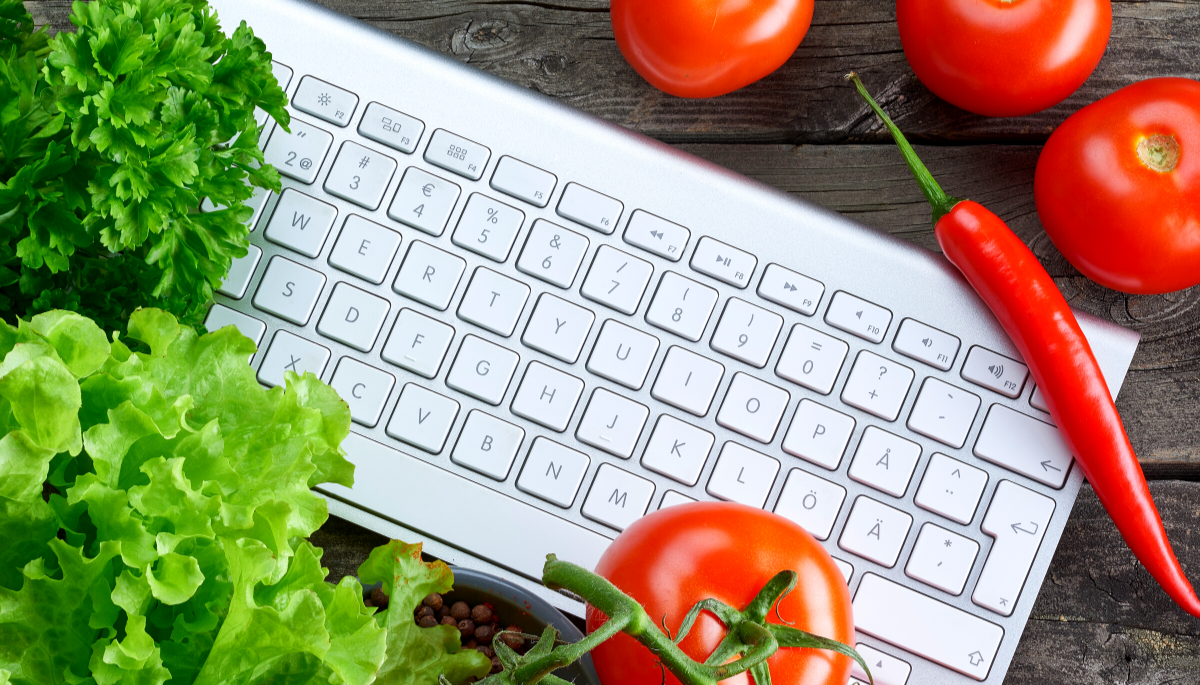
Amidst the ongoing shift towards B2B & B2C eCommerce, digital marketing services have taken on a new meaning in the food and beverage industry.
The digital disruption of the food and beverage industry keeps accelerating. Your customers are now shifting their spend to food-service suppliers who can deliver the most efficient, transparent, and smooth online experience. This is not a time to dally around.
Why Digital Marketing Strategies Matter in the Food and Beverage Industry
Given this competitive eCommerce environment, digital marketing services have slowly taken on a new meaning. They’re an excellent way of establishing your brand identity by boosting your reach, visibility, and credibility. The right strategies will also help your potential B2B or B2C customers understand your services and what sets you apart from your competitors.
Additionally, all digital campaigns are flexible, measurable, and more cost-effective than most traditional marketing methods. An excellent long-term digital marketing plan will ultimately convince more people in your audience to purchase your goods or services.
Your hospitality or food-service brand can benefit from digital marketing services in several remarkable ways. You will be able to:
- Expand your business reach
- Establish or improve your brand image
- Encourage customer loyalty
- Quickly grow your audience
- Convince users to purchase from your website
- Share promotional content
- Promote your business on popular platforms
- Leverage trends to boost your online brand
- Stay connected with your customers
- Gather and use relevant feedback
Next, we’ll teach you six marketing strategies and tips to help you seize the digital F&B industry. Of course, most of these strategies are actionable outside the food & beverage eCommerce market. Let’s dig in!
6 Digital Marketing Strategies for the Food and Beverage Industry

Step 1: Use Buyer Personas to Determine Your Audience
Businesses in the food and beverage industry will greatly benefit from understanding their online customers, particularly with consumer behaviors constantly changing amidst the ongoing COVID-19 crisis. Why is that? For one thing, audiences are moving online, purchasing more and more via phone devices. On top of that, their online expectations are greater than they would have been two years ago. For this reason, it’s almost impossible to convince potential customers to choose you over competitors if you don’t know how to deliver what they’re looking for. So don’t even bother setting up Google or Facebook ads unless you know how to properly definie your target audiences.
Luckily, thanks to constantly improving digital technologies (AI, automation, analytics), you can now use “big data” and filter it to understand your target audiences.
But where do you start?
Any reliable online growth plan begins with the so-called buyer persona – a marketing framework capable of relieving who your customers are, what they need, and how to reach them. In short, we use this strategy to conceptualize complex information on buyer demographics in a simple, actionable way. The introduction of data-driven (automated) personas is part of a general shift towards automated analysis. You can learn more about building data-driven buyer personas in this 3-part blog series by Mejix (Part I, Part 2, Part 3), which also includes a free-to-download buyer persona template.

Step 2: Tackle What Matters in Industry Blogs
This year’s data tells us that the internet grows by a staggering 7.5 million blog posts every day. How come blogging seems to matter now more than ever? For one thing, it’s incredibly effective in grabbing the attention of web users, enhancing organic search rankings (improving SEO), and leading free (organic) traffic to your website.
Additionally, frequent blogging can set your brand apart in several remarkable ways. For example, you can cover industry news, inform buyers, advertise your food services or products, and notify users about promotions or upcoming events. The goal with blogging is to make sure your website consistently gains industry-relevant content. This way, you increase your platform’s trustworthiness, grow your domain authority, and have more chances of securing a higher spot in the SERPs (Search Engine Result Pages). Remember to only post content for your current and potential audiences, defined with the buyer persona method. Other content marketing tactics you should use include: email marketing, blogs, social media posts, case studies, videos, and infographics.

Step 3: Build a Strong Visual Identity to Help Your Brand Stand Out
In digital marketing, so much revolves around building a recognizable brand. But typically, customers rarely remember the verbal traits of a brand. They’re more likely to recall visual stimuli – and that’s when a brand’s visual identity kicks in. This refers to all imagery or graphical information conveying a brand’s message, values, and distinctive qualities. But, most importantly, these recognizable visual clues carry psychological triggers that encourage your target customers to relate to and purchase your products.
Key visual brand elements:
- Logo
- Colors
- Typography
- Photography
This also hints at why web design is central to eCommerce. Just take a look at Standford’s web credibility study, which tells us that 75% of users judge a company’s credibility based on website design alone.
And when we speak of hospitality or food service, visuals are all the more powerful not only in B2C but also in the B2B eCommerce market. Take a look at B2B wholesale supplier Riviera Produce to see what we mean: the brand has a pleasing, clean, and intuitive web design. Images depicting produce are vivid and highly descriptive, reinforcing the company’s core values: quality, local farming, fresh and organic produce. Additionally, the brand regularly uploads engaging infographics (weekly specials, seasonal guides), while its weekly industry blogs feature a fair share of stimulating imagery.
Remember that, when it comes to food products, evocative images can enhance the desirability of what you’re selling. How many times have you drooled over Instagram pages such as @chefsoninstagram or @wavemountdora? That’s the kind of effect you want to trigger on your websites (design, UI), newsletters, social media posts (posts, ads), and virtually throughout your entire digital marketing strategy.

Step 4: Leverage Trends in your F&B Market Segment
When you’re getting into digital marketing, it’s crucial to constantly check on what your audiences are most interested in. And because food trends and customer expectations are ever-changing, your buyer personas will never be “complete” or “fixed” data sets, but require consistent, regular updates.
So, before you start working on a detailed digital marketing plan, make sure you’re fully in the know. Here’s a list of some of the most general and prevalent food and beverage industry trends of 2021:
- Convenience
- Sustainability
- Waste control and reduction
- Local and organic foods
- Plant-based diets
- Healthier alternatives to sugar
- Alternative proteins
- Functional food
- Seasonality & seasonal events
- Better allergen and quality management processes
- A stable supply chain
- Automation
We advise that you research and use current trends in your F&B market segment, leveraging the “hype” to advertise and promote your brand. For instance, you can tailor your social media marketing (SMM) to match specific wants and needs, use popular hashtags on social media platforms, perform keyword research for SEO, launch festive events, or offer seasonal discounts to draw in an excited audience.

Step 5: Grow Your Business via Targeted Paid Promotion
Ah, the infamous paid ads. Also known as paid promotions, paid advertising is a digital marketing method. Put very simply, companies pay a search engine (mainly Google), social media platforms (Facebook, Instagram), or other websites to advertise their services or products.
You may use paid ads to:
- Expand your online audience
- Maximizes your business reach
- Boost your website sales
- Generate more leads
- Get more visibility for your brand
For every paid campaign, you’ll have to set up clear-cut targets and measurable KPIs in advance. Facebook, for instance, will ask you to choose an objective for every paid campaign: awareness, traffic, engagement, leads, app promotion, sales, and so forth.
On top of being cheaper than traditional ads, digital advertising provides you with detailed, real-time insights into how your audiences respond to ongoing campaigns; it further allows you to optimize and make adjustments to these campaigns, provided you know what to improve.
Lastly, you may even allow Google or social media platforms to automatically adjust your goals and audiences based on their algorithmic insights.

Step 6: Gather and Leverage Customer Feedback
Given our competitive eCommerce market, companies need to meet and even exceed customer expectations. Therefore, the importance of customer feedback for the hospitality, food, and beverage industries is immeasurable.
Customer feedback can help you:
- Improve customer experience and website user experience (UX) – because you’ll quickly figure how to improve your services and platforms;
- Know your customer’s needs from the very source – so you can stay on track with changing customer needs and industry trends;
- Make better, reality-rooted business decisions – as you’ll receive genuine, actual insights into your audience (and not just abstract data);
- Improve your brand image – since you keep a client-focused, human approach at the core of your business strategy;
- Encourage customer loyalty – by showing your willingness to connect, listen, and answer;
- Leverage positive feedback – as you can use client testimonials on your website to boost your brand’s image and trustworthiness.
In short, receiving and listen to customer feedback helps you figure out precisely what they want and how to keep them happy, loyal, and engaged.
Final Thoughts on F&B Digital Marketing
Online competition is growing, which means you must up your game and give people a good reason to purchase from you. We hope the strategies mentioned above give you a good idea of what it takes to gain online visibility via digital marketing.
Keep in mind that the current scope of the F&B eCommerce sector runs way beyond restaurants making home deliveries. We’ve seen that farms, food retailers, wholesale suppliers, and many other actors across the F&B supply chain can benefit from digital marketing services. If you’re looking for a digital marketing agency with broad experience in the food and beverage sector, don’t hesitate to reach out.


